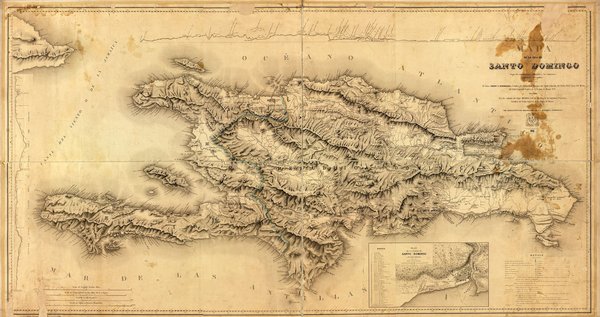Firestarter: Who were the Boucaniere?
By Tyler Stone
Firelock recently announced their , the gun-toting women ‘Boucaniere’. The project “funded” in record time, and digital modeling is underway for a full release of the ladies. We’ll be seeing them in live metal soon, but where do these women come from, and how do they fit into Blood & Plunder?
The only lists that Boucaniere appear in are the French ‘Chasseurs’ and ‘Caribbean Militia’ subfactions. These factions reflect the early 17th century French settlements in the Spanish Main. Despite their reputation, these settlers were not adventurers, but refugees of religious persecution.
Mike gave us this sneak preview of a sculpt during a Paint NightIn 1555, John Calvin began working to convert his homeland of France to his faith. For the next two decades, ministers came to the country and converted 1.8 million French from all walks of life. The French called these converts , as an insult. The conversions would begin the French Wars of Religion – three decades of sectarian warfare.
Peace was only attained after the 1598 Edict of Nantes, signed by King Henry IV (himself a former Huguenot). When Henry died and the devout Catholic Louis XIII ascended the throne in 1610, all bets were off. New wars broke out, including atrocities such as the massacre at Nègrepelisse. Faced with such terrible violence, many Huguenots fled France altogether.
Those who ventured to the New World did so as refugees. They brought their entire families, children and wives included. If they thought they would receive succor abroad, they were tragically mistaken. Portuguese soldiers stormed a Huguenot settlement in Rio de Janeiro, executing all prisoners. The Spanish attacked Fort Caroline in Florida, taking no prisoners.

By 1620, there were small communities of French settlers in northern Hispaniola – modern Haiti. They also settled a small offshore island, named for it’s turtle-shaped mountain; Tortuga. The settlers were consummate hunters, expert shots with their long muskets. They hunted wild hogs, and picked off stray cattle from the Spanish farmers. Men would sometimes take to small boats and raid passing ships. More often they traded with them. There were few safe ports in the Caribbean where privateers could replenish supplies. Stopping at Hispaniola or Tortuga meant a hearty ration of fresh and cured meat. It was from their preparation of the latter that the settlers took their new name: .
It was still hard living for the plucky Frenchmen and their families. The Spanish considered the whole of the main, including its flora and fauna, to be property of the Crown. This meant that the Boucaniers were poachers, trespassers. Permanent settlements on Hispaniola only made targets for Spanish aggression. In 1629, a Spanish raid drove the Boucaniers and some newly arrived English out of Tortuga. The Spanish built a fort, but the returning protestants captured it the next year.
In 1633, the first slaves arrived in Tortuga from across the Atlantic. This only lasted for two years. The island already had a reputation for lawlessness, and by 1635 the slaves were “out of control.” Some took to raiding their former masters, while others mingled with the settlers. That same year, the Spanish raided once again, driving the settlers from the island for a second time. The French would return in 1637. This second resettlement would also include a sizeable population of Dutchmen. The French established the fort of de Rocher, which would defeat a fourth invasion in 1641.
Concept art for the 4-model pack of BoucaniereFor the next decade and a half, the French, Dutch, and Freedmen occupied the tiny, lawless island. It was frontier living. Diseases, Spanish raids, and a dangerous lifestyle had left only the toughest settlers. Everyone had to pull their weight, regardless of race or gender. It was far from a pirate utopia of love and equality, but it was as close as any 17th century community would get.
Still, all good things must end. In 1654 the Spanish returned and drove the Boucaniers from the island for the fourth and final time. When the French resettled Tortuga, it was as an official colony. Old Boucaniers – by now anglicized as Buccaneers – straggled back to the island. The wild history of the island still held a few surprises, though.
The island remained a pirate haven for several more decades. At one point, the French believed that they could import women to “civilize” the rugged men. The problem was that no civilized French woman wanted to cross the Atlantic to marry a huntsman. So the French did the next best thing, and gathered women from prisons, brothels, and orphanages. Those women in turn established taverns, brothels, and quasi-legitimate businesses on the island. In keeping with tradition, Tortuga refused to be tamed.
Concept art for Anne Bonny, arriving as part of the upcoming Raise the Black expansionThe history of French boucaniere may be the origin of characters like Jacquotte Delahaye and Anne Dieu-le-Veut. Delahaye is even said to have come from Haiti, with a French father and African mother. Tough women were not exclusive to Tortuga either – Anne Bonny hailed from the Carolina colony. It’s also hard to imagine that desperate women didn’t take up arms to repel raiders from the sea or woodland. Even if you are not playing Chasseurs, a handful of ladies wouldn’t look out of place amongst a militia.
So, are you planning to pick up this latest Firelock release? If you do, will they do battle as Boucaniere, or as grim defenders of some frontier settlement in the New World?

Good read. Excellent information and a lot to think about.